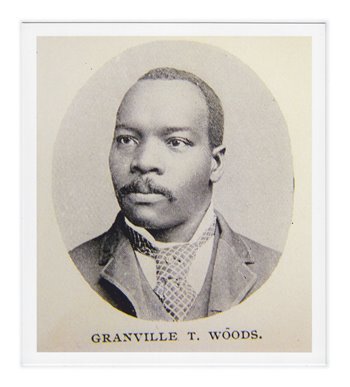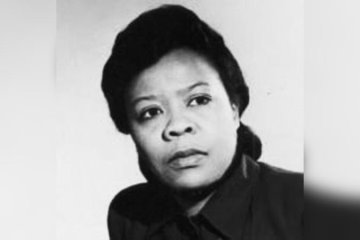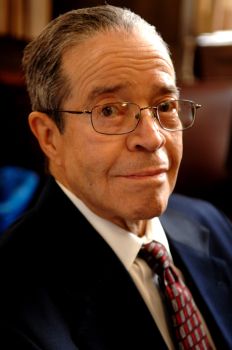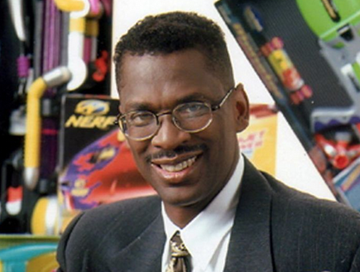Black History Month Celebrates Inventors and Engineers
Black History Month Celebrates Inventors and Engineers


One of the best ways to celebrate Black History Month is learning more about the contributions of Black engineers and inventors—past, present, and future.
“ASME continues its commitment to supporting the achievements and aspirations of Black engineers and our Black employees. This is essential to creating a more equitable world for all,” commented ASME executive director/ CEO Thomas Costabile, P.E.
This Black History Month, learn more about these six among the countless Black engineers whose work exemplifies ASME’s mission to advance engineering for the benefit of humanity.
“Woods is best known for working with electricity in the late 1800s,” wrote The New York Times in its famous "Overlooked" Series. Some have credited him with inventing the third rail (or at least improving it and allowing subways to operate). He is best known for having invented safety and communication mechanisms for rail systems.
Known as “the Black Edison,” Granville Tailer Woods was born in 1856 in Columbus, Ohio. He invented what he called the Synchronous Multiplex Railway Telegraph in 1887. This invention gave dispatchers knowledge of the location of trains. It was the most notable invention in his life, being a variation of the induction telegraph, that relied on ambient static electricity from existing telegraph lines to send messages between train stations and moving trains.
Over the course of his life, Woods would obtain more than 50 patents and sell a number of his devices to Westinghouse, General Electric, and American Engineering. Other inventors often claimed his devices as their own. For example, Woods defended his claims and had, in fact, been successful in defending himself against a claim by Thomas Edison. The court recognized there were no other devices upon which he could have depended or relied upon to make his device. After the second defeat, Edison offered Woods a position with the Edison Company.
Learn How ASME celebrates the contributions of Black engineers.
An American nurse and inventor, Marie Van Brittan Brown once said, “Innovation knows no boundaries; it is the gateway to a better future.” History recognizes her pioneering work in the field of home security systems. Many credit her innovative spirit and determination for being able to lay the foundation for modern security technology.
In 1966 Marie Van Brittan Brown invented a home security system. She and her husband, an electronics technician, were granted a patent for the system in 1969. Brown’s system used a camera that could slide into and look through four peepholes in her front door. The camera’s view would then appear on a monitor in her home, so she could “see” any activity outside her door. Brown eventually added other features to the system, including a microphone to speak to anyone at the door, a button to unlock the door, and a button to contact the police.
J. Ernest Wilkins Jr. earned his doctoral degree at the age of 19 and designed and developed power generating nuclear reactors. He was a physicist, nuclear scientist, and mechanical engineer who worked alongside at least 11 Black chemists and physicists on the Manhattan Project (atomic bomb technology) during WWII.
At 13, he became the University of Chicago’s youngest student. He earned his bachelor’s degree in Mathematics at the age of 17, and in 1942, became the seventh African American to obtain a Ph.D. in Mathematics from the school. After completing his Ph.D., Wilkins taught mathematics at Tuskegee Institute, and then the Metallurgical Laboratory at the University of Chicago recruited him to work on and contribute to the Manhattan Project. Wilkins was portrayed by Ronald Auguste in the 2023 film Oppenheimer.
He is considered to be one of the most important mathematicians of the 20th century, having developed mathematical models to explain gamma radiation and shielding against it. Wilkins and Eugene Wigner co-developed the Wigner-Wilkins approach to nuclear reactor physics, used to estimate the distribution of neutron energies in nuclear reactors. Wilkins later went on to become the President of American Nuclear Society in 1974.
Become a Member: How to Join ASME
Lonnie Johnson, a mechanical and nuclear engineer, worked for NASA, the U.S. Air Force, and the Oak Ridge National Laboratory. By day, he worked on the first B-52 stealth bomber on the Air Force Base, and by night, he worked on his inventions, eventually getting 100 patents.
It was the invention of the Super Soaker water gun that hit the toy stores in 1990 made him famous. Concurrently looking for alternatives for freon for a new refrigeration told Popular Mechanics that he hooked a nozzle up to his bathroom sink and “accidentally shot a stream of water across a bathroom where I was doing the experiment and thought to myself, 'This would make a great gun.’” He then worked to design a prototype and built plexiglass pieces for his water gun on his basement lathe.
Johnson graduated with a degree in mechanical engineering and master’s in nuclear engineering from Tuskegee University. He fulfilled his ROTC obligation in the Air Force. In 1979, he was recruited by NASA’s Jet Propulsion Laboratory. At NASA, Johnson was part of the historic Galileo mission.
Ursula Burns is a mechanical engineer who began her career as an intern for Xerox, climbed the ladder, and became the first Black woman CEO to lead a Fortune 500 company. Her tenure as CEO of Xerox spanned from 2009 to 2016. Burns remained the chair at Xerox from 2010 to 2017.
Burns is known for the quote, “Believe that there are no limitations, no barriers to your success—you you will be empowered and you will achieve” and also known for serving on the boards of Uber, American Express, and ExxonMobil. She was the chairperson and CEO of VEON from late 2018 to early 2020, and the chair of Teneo.
Burns led the White House national program on Science, Technology, Engineering, and Math (STEM) from 2009 to 2016. Additionally, she served as Chairwoman of the President's Export Council from 2015 to 2016.
American inventor Frederick McKinley Jones was an entrepreneur, engineer, and winner of the National Medal of Technology. An inductee of the National Inventors Hall of Fame, he’s best known for his innovative work with mobile refrigeration technology.
In this life, Jones took out 61 patents—40 alone for refrigeration technology. He co-founded the U.S. Thermo Control Company, later known as Thermo King.
Jone’s roof-mounted cooling system was used by company trucks in the mid-1930s to refrigerate produce that needed to be sent long distances. He received a patent for this invention in 1940 and co-founded the U.S. Thermo Control Company, later known as Thermo King.
Jones served as a U.S. Army sergeant in WWI and his company was critical during WWII, helping to preserve blood, food, and supplies during the war.
Cathy Cecere is membership content program manager.
This Black History Month, learn more about these six among the countless Black engineers whose work exemplifies ASME’s mission to advance engineering for the benefit of humanity.
1. Granville Tailer Woods
“Woods is best known for working with electricity in the late 1800s,” wrote The New York Times in its famous "Overlooked" Series. Some have credited him with inventing the third rail (or at least improving it and allowing subways to operate). He is best known for having invented safety and communication mechanisms for rail systems.
Known as “the Black Edison,” Granville Tailer Woods was born in 1856 in Columbus, Ohio. He invented what he called the Synchronous Multiplex Railway Telegraph in 1887. This invention gave dispatchers knowledge of the location of trains. It was the most notable invention in his life, being a variation of the induction telegraph, that relied on ambient static electricity from existing telegraph lines to send messages between train stations and moving trains.
Over the course of his life, Woods would obtain more than 50 patents and sell a number of his devices to Westinghouse, General Electric, and American Engineering. Other inventors often claimed his devices as their own. For example, Woods defended his claims and had, in fact, been successful in defending himself against a claim by Thomas Edison. The court recognized there were no other devices upon which he could have depended or relied upon to make his device. After the second defeat, Edison offered Woods a position with the Edison Company.
Learn How ASME celebrates the contributions of Black engineers.
2. Marie Van Brittan Brown
An American nurse and inventor, Marie Van Brittan Brown once said, “Innovation knows no boundaries; it is the gateway to a better future.” History recognizes her pioneering work in the field of home security systems. Many credit her innovative spirit and determination for being able to lay the foundation for modern security technology.
In 1966 Marie Van Brittan Brown invented a home security system. She and her husband, an electronics technician, were granted a patent for the system in 1969. Brown’s system used a camera that could slide into and look through four peepholes in her front door. The camera’s view would then appear on a monitor in her home, so she could “see” any activity outside her door. Brown eventually added other features to the system, including a microphone to speak to anyone at the door, a button to unlock the door, and a button to contact the police.
3. J. Ernest Wilkins Jr.
J. Ernest Wilkins Jr. earned his doctoral degree at the age of 19 and designed and developed power generating nuclear reactors. He was a physicist, nuclear scientist, and mechanical engineer who worked alongside at least 11 Black chemists and physicists on the Manhattan Project (atomic bomb technology) during WWII.
At 13, he became the University of Chicago’s youngest student. He earned his bachelor’s degree in Mathematics at the age of 17, and in 1942, became the seventh African American to obtain a Ph.D. in Mathematics from the school. After completing his Ph.D., Wilkins taught mathematics at Tuskegee Institute, and then the Metallurgical Laboratory at the University of Chicago recruited him to work on and contribute to the Manhattan Project. Wilkins was portrayed by Ronald Auguste in the 2023 film Oppenheimer.
He is considered to be one of the most important mathematicians of the 20th century, having developed mathematical models to explain gamma radiation and shielding against it. Wilkins and Eugene Wigner co-developed the Wigner-Wilkins approach to nuclear reactor physics, used to estimate the distribution of neutron energies in nuclear reactors. Wilkins later went on to become the President of American Nuclear Society in 1974.
Become a Member: How to Join ASME
4. Lonnie Johnson
Lonnie Johnson, a mechanical and nuclear engineer, worked for NASA, the U.S. Air Force, and the Oak Ridge National Laboratory. By day, he worked on the first B-52 stealth bomber on the Air Force Base, and by night, he worked on his inventions, eventually getting 100 patents.
It was the invention of the Super Soaker water gun that hit the toy stores in 1990 made him famous. Concurrently looking for alternatives for freon for a new refrigeration told Popular Mechanics that he hooked a nozzle up to his bathroom sink and “accidentally shot a stream of water across a bathroom where I was doing the experiment and thought to myself, 'This would make a great gun.’” He then worked to design a prototype and built plexiglass pieces for his water gun on his basement lathe.
Johnson graduated with a degree in mechanical engineering and master’s in nuclear engineering from Tuskegee University. He fulfilled his ROTC obligation in the Air Force. In 1979, he was recruited by NASA’s Jet Propulsion Laboratory. At NASA, Johnson was part of the historic Galileo mission.
5. Ursula Burns
Ursula Burns is a mechanical engineer who began her career as an intern for Xerox, climbed the ladder, and became the first Black woman CEO to lead a Fortune 500 company. Her tenure as CEO of Xerox spanned from 2009 to 2016. Burns remained the chair at Xerox from 2010 to 2017.
Burns is known for the quote, “Believe that there are no limitations, no barriers to your success—you you will be empowered and you will achieve” and also known for serving on the boards of Uber, American Express, and ExxonMobil. She was the chairperson and CEO of VEON from late 2018 to early 2020, and the chair of Teneo.
Burns led the White House national program on Science, Technology, Engineering, and Math (STEM) from 2009 to 2016. Additionally, she served as Chairwoman of the President's Export Council from 2015 to 2016.
6. Frederick McKinley Jones
American inventor Frederick McKinley Jones was an entrepreneur, engineer, and winner of the National Medal of Technology. An inductee of the National Inventors Hall of Fame, he’s best known for his innovative work with mobile refrigeration technology.
In this life, Jones took out 61 patents—40 alone for refrigeration technology. He co-founded the U.S. Thermo Control Company, later known as Thermo King.
Jone’s roof-mounted cooling system was used by company trucks in the mid-1930s to refrigerate produce that needed to be sent long distances. He received a patent for this invention in 1940 and co-founded the U.S. Thermo Control Company, later known as Thermo King.
Jones served as a U.S. Army sergeant in WWI and his company was critical during WWII, helping to preserve blood, food, and supplies during the war.
Cathy Cecere is membership content program manager.







